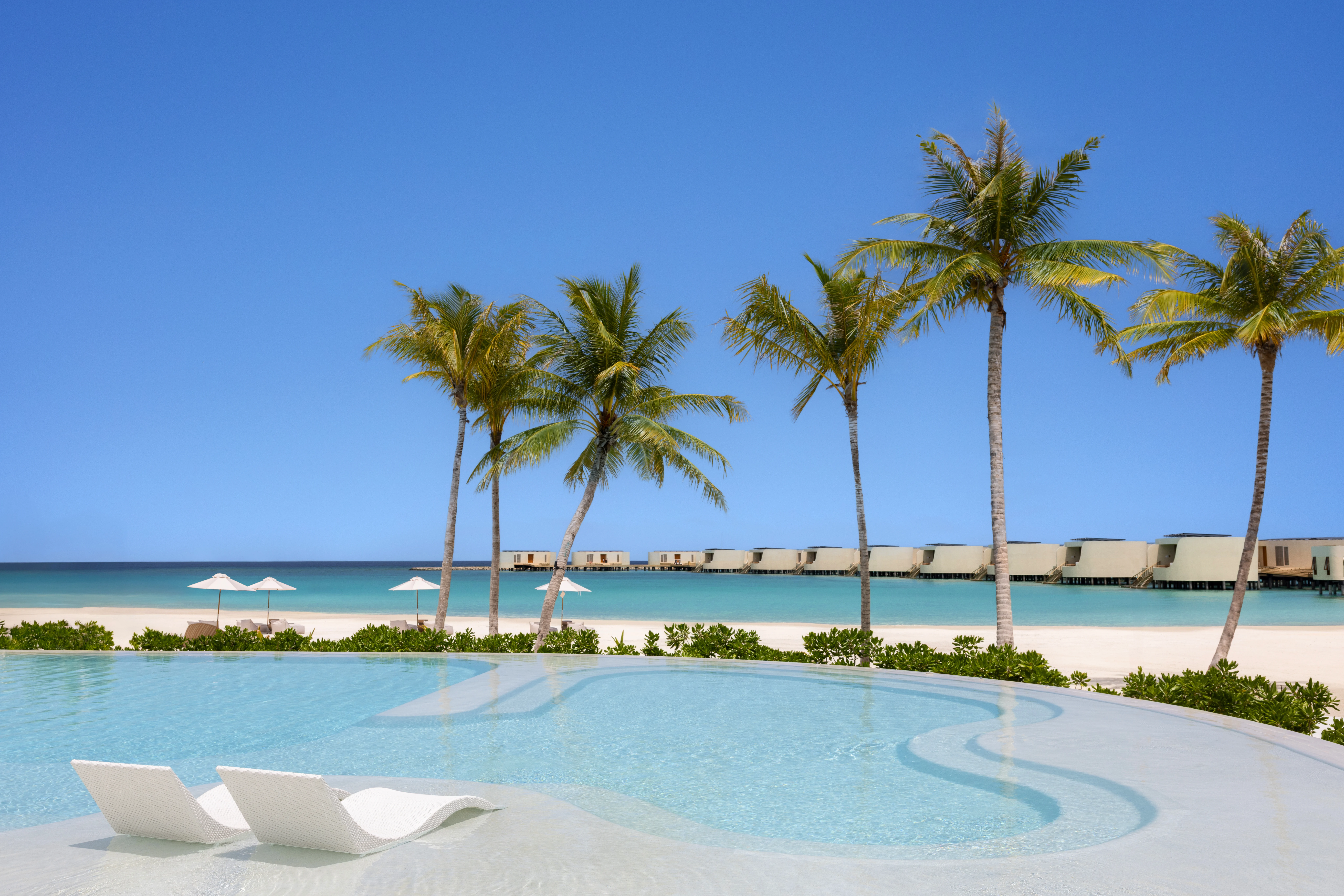
Opportunities to witness a total solar eclipse are rare, and the opportunity of experiencing one in the Arctic - from the deck of a polar ship - are even more rare. Quark Expeditions is offering the magnificent chance to do just that, with two eclipse-themed cruises that will take place during the next total solar eclipse on 12 August 2026.
These are the ‘Iceland to Greenland: Total Solar Eclipse, 17 Days’ voyage from 3-19 August 2026 on one of Quark Expeditions’ newest ships the Ocean Explorer; and the ‘Iceland to Greenland: Total Solar Eclipse, 13 Days’ voyage from 6-18 August 2026 on the helicopter-equipped Ultramarine.
These are truly inspirational bucket-list adventures, on which passengers can not only watch but learn about the science of solar eclipses with guest speakers and take in the beauty of the Arctic region - including exploring the seldom-visited Westfjords a hidden gem of west Iceland, sailing across the Denmark Strait, and cruising the 110-km Kong Oscar Fjord.

The guest speaker on the ‘Iceland to Greenland: Total Solar Eclipse, 17 Days’ voyage is world-renowned eclipse-photographer Michael Zeiler who will deepen passengers’ understanding of eclipse viewing, observational astronomy and celestial mechanics. The guest speaker on the ‘Iceland to Greenland: Total Solar Eclipse, 13 Days’ voyage is veteran science journalist, broadcaster and umbraphile David Baron, who has himself witnessed nine total solar eclipses across the globe.
Quark Expeditions was the first operator to successfully lead a total solar eclipse voyage in remote Antarctica back in November of 2003, and now it has turned its expertise to the Arctic. Dedicated to having every passenger leave their cruise with wondrous tales they can tell for a lifetime, Quark Expeditions’ 30 years of experience in polar travel shows through in its highly skilled and knowledgeable team, innovative itineraries and deep passion for exploring these spectacular regions of the world.
The company prides itself in continuously striving to push the boundaries of polar travel, with industry-first innovations, and the most memorable itineraries.
The Arctic total solar eclipse voyages include the insight and knowledge of the guest speakers, eclipse viewing glasses, one flightseeing excursion (Ultramarine only), Zodiac excursions, all food and drink onboard, free WiFi and free Quark parka to keep.

‘Iceland to Greenland: Total Solar Eclipse, 17 Days’
This 2,200 nautical mile voyage features exploration of Northeast and South Greenland, and includes two of the world’s northernmost capital cities - the Icelandic capital of Reykjavik and Nuuk the capital of Greenland. Along with the chance to see waterfalls, towering cliffs and remote fishing villages in the Westfjords, as well as icebergs, wilderness areas, glaciers and the deep fjords of Greenland.
It takes place aboard the elegant Ocean Explorer, a 138-passenger vessel purpose-built for polar exploration and fitted with the latest in expedition ship technology. Its spacious cabins feature a bespoke Scandinavian design and almost all have verandas, while facilities include main and private dining rooms, the Latitude Bar, library, dry sauna, fitness centre, two outdoor Jacuzzis and observation lounge. The ample outdoor viewing areas and multi-height outer decks are ideal for long-view photography and wildlife viewing.
There’s time to explore Reykjavik before the Ocean Explorer sets sail for ‘Iceland’s best-kept secret - the Westfjords’, a remote rugged peninsula dominated by mountains, volcanic rock and fjords. Days two to four of the cruise are spent here, exploring by ship and Zodiac and, where possible, on guided shore landings. The scenery is dramatic and the views are diverse, from dramatic cliffs and gushing waterfalls to beaches, rolling hills and high moorlands. Icelandic ponies and shaggy sheep graze the hillsides, and small fishing communities can be found at the fjord edges. A highlight is the chance to visit Vigur, a private island where passengers can delve into Icelandic culture and heritage as far back as the 11th Century. Adventure options here include Zodiac cruising, sea kayaking and a paddle excursion.

Then, as the voyage continues north across the Denmark Strait between Iceland and Greenland, the ship’s polar experts will present on a range of topics including Arctic history, wildlife, geology and climatology.
Navigating within the boundaries of the Northeast Greenland National Park - the planet’s largest national park covering 972,000 sq km - the cruise sails into Kangerluk Kong Oscar, also known as Kong Oscar Fjord. Days six and seven are spent in this fjord system popular for its famously bright sandstone, and experiencing the wonders of nature in Segelsällskapet Fjord, where alternating layers of limestone and dolomite create a stunningly beautiful ‘geological art’ canvas.
Days eight and nine are given to exploring Scoresby Sund, the world’s largest fjord system and for excitement to build for the approaching total solar eclipse. The expedition leader and ship captain will monitor sea and ice conditions and meteorological forecasts to strategically position the Ocean Explorer for the best eclipse viewing.
On day 10 of the voyage the eclipse will start at 2.34 pm, and totality will begin at 3.34 pm and end at 3.36 pm. The total eclipse of the sun will last 2 minutes and 17.2 seconds, with the overall viewing experience lasting two hours, one minute and three seconds. Throughout the day, passengers will have opportunities to learn from guest eclipse expert Michael Zeiler.

Days 11 to 13 will see the Ocean Explorer at sea, sailing the coast of Greenland. There’ll be plenty of time to enjoy the ship’s world-class facilities, and to spend time out on deck to watch for icebergs and keep all eyes peeled for whales. There will also be a lineup of expert-led polar presentations.
On day 14 it’s tiny and picturesque Aappilattoq, perched on the shores of one of the world’s most scenic fjords - the 100-km long Prins Christian Sund (also known as Ikerasassuaq). Home to around 100 permanent residents, Aappilattoq’s name has been interpreted to mean ‘sea anemone’ or ‘red’ after the crimson mountain that rises above the settlement. Most of the residents rely on hunting and fishing, with local fishermen selling surplus cod and turbot to a small fish factory run by Royal Greenland.
Day 15 of the voyage is a day of Norse history. Ivittuut, formerly known as Ivigtût (‘grassy place’) is an abandoned mining town near Cape Desolation in southwestern Greenland and close to the ruins of the ancient Norse Middle Settlement. The 1987 translocation of muskoven to Ivittuut from the Kangerlussuaq area is the reason the lumbering beasts can be seen here, while other native wildlife consists mostly of Arctic hare and Arctic fox.
Upon arrival in Nuuk the next day there’s a charter flight to Reykjavik for an overnight stay (both included), and for those who so desire, the chance to stay on in Reykjavik for further exploration of the Icelandic capital.

‘Iceland to Greenland: Total Solar Eclipse, 13 Days’
This voyage takes place on the 199-passenger, technologically advanced ship the Ultramarine, which boasts spacious guest suites, welcoming public spaces, and plenty of outdoor wildlife viewing spaces. Its facilities include the Ambassador Theater, Balena Restaurant, Bistro 487, Panorama Lounge and Bar, Tundra Spa and Sauna, a fitness centre, boutique, ready rooms, wraparound deck, water-level Zodiac hangar and twin engine helicopters.
As with the 17-day itinerary, the 13-day cruise first visits the Westfjords for an exploration by Zodiac and ship as well as guided shore landings of what is one of Iceland’s oldest regions - home to volcanic rocks dating back 16 million years. And where the modest settlements preserve a maritime heritage that goes all the way back to the heady days of the Viking era.
Day four sees the Ultramarine sail north across the Denmark Strait, as passengers can partake in expert-led presentations on Arctic history, wildlife, geology and climatology.

As excitement builds for the viewing of the total solar eclipse, days five and six sees the voyage explore Kong Oscar Fjord. If conditions allow there’s the opportunity to hike in Skipperdal Valley, and to visit Blomsterbugten (also known as Flower Bay) on Ymer Island. There’s also a possible hike to the seldom visited Noa Lake.
As the Ultramarine moves into the best possible viewing position for the eclipse, guest speaker David Baron will deliver a presentation in which he’ll delve into the societal impacts of eclipses - how such epic events have spurred societies and specific individuals to achieve scientific greatness.
Following the eclipse on day seven of the voyage, the Ultramarine next visits Scoresby Sund where passengers can admire the mountains, valleys and glaciers that line the fjords, giving rise to a spectacular collection of icebergs. The plan is also to journey through Bjørne Øer (Nannut Qeqertaat), a group of islands also known as Bear Islands that feature a maze of channels, steep cliff faces and fascinating geology. The exploration here includes Zodiac cruises and shore visits.
Day 12 involves sailing back across the Denmark Strait, when there’s time to try the ship’s facilities and attend an expert-led educational presentation, before arriving back in Reykjavik the following day.

Discover more about these wondrous total solar eclipse 2026 voyages, and the pioneering spirit of polar exploration for which Quark Expeditions has become synonymous! Visit the Quark Expeditions website now for contact details of the Polar Travel Advisor team nearest to you.




















